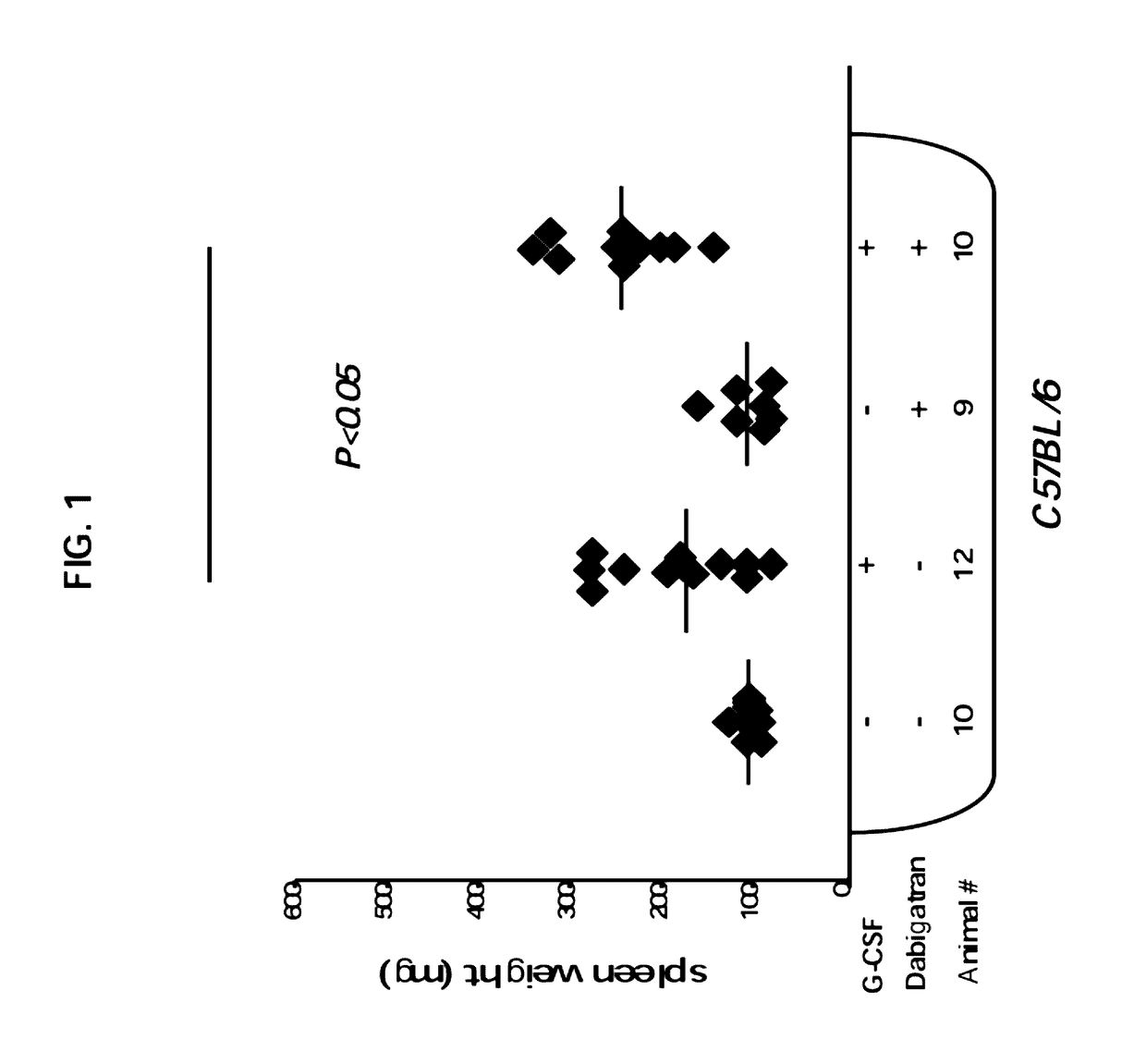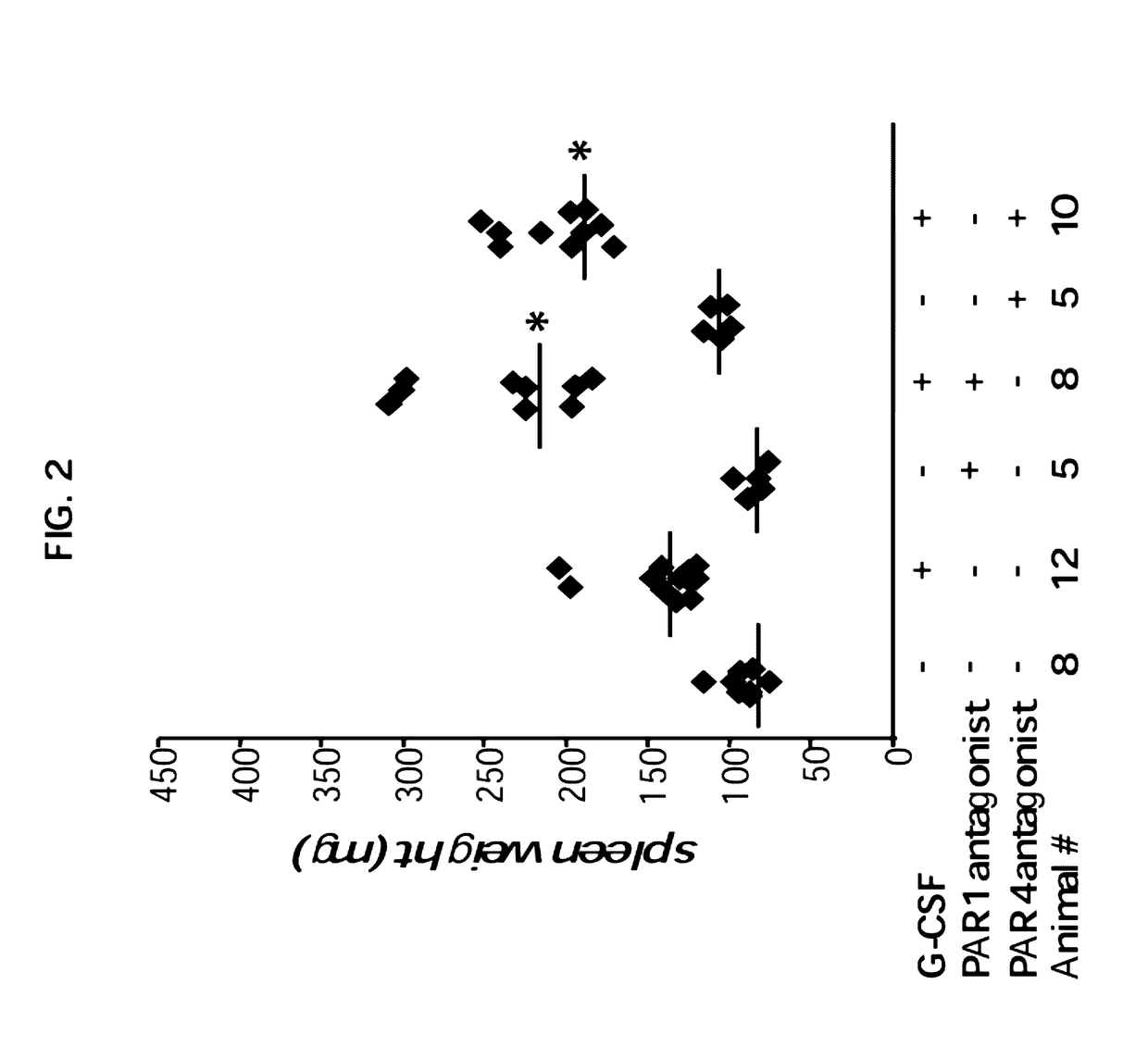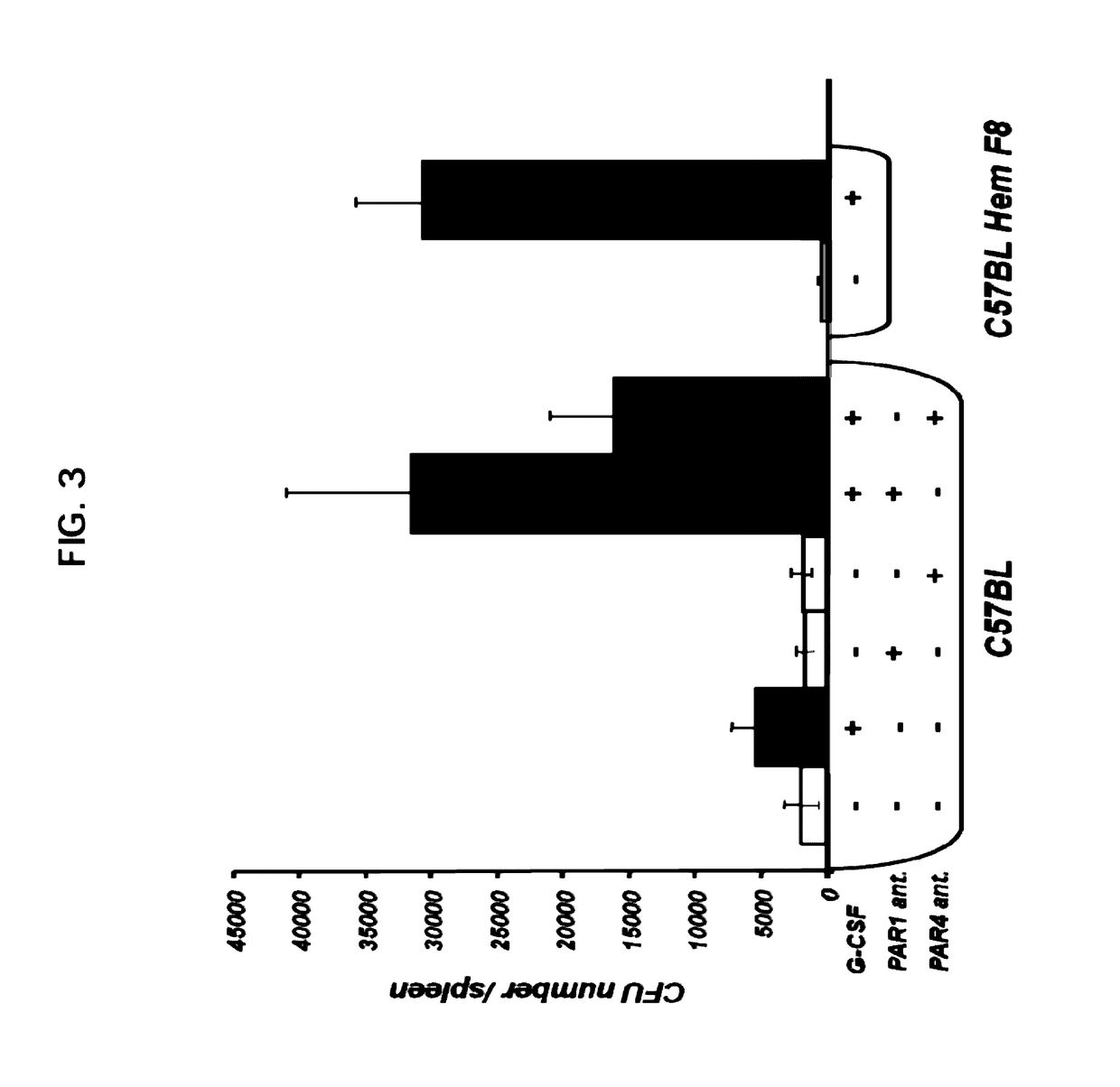Methods for hematopoietic precursor mobilization
a technology of hematopoietic precursor cells and methods, applied in the direction of peptide/protein ingredients, extracellular fluid disorder, immunological disorders, etc., can solve the problems of poor mobilization, 25% of patients do not respond efficiently, etc., and achieve the effect of increasing the mobilization of hematopoieti
- Summary
- Abstract
- Description
- Claims
- Application Information
AI Technical Summary
Benefits of technology
Problems solved by technology
Method used
Image
Examples
example 1
G-CSF Induced Splenomegaly is Enhanced Upon Specific Inhibition of Thrombin
[0186]Materials and Experimental Procedures
[0187]Animals
[0188]All animals were maintained under conditions approved by the Institutional Animal Care and Use Committee at the Weizmann Institute. The study protocol was approved by the ethics committees at Weizmann Institute. In these experiments, 8 to 10 week old immune competent C57BL mice were used. All mice were kept in small cages (up to five animals per cage) and fed sterile food.
[0189]G-CSF Treatment
[0190]Mice were treated by daily subcutaneous injections of recombinant human G-CSF (Neupogen, Amgen) at a dose of 250 μg per kg per day for 7 days. To determine the spleen weight, mice were euthanized and spleens were harvested 7 days after the initiation of G-CSF treatment.
[0191]Treatment with Thrombin Inhibitor
[0192]Dabigatran etexilate (Boehringer Ingelheim Pharma KG, Biberach, Germany) was administered orally at a dosage of 30 mg / kg. A final volume of 0.3...
example 2
Enhanced of G-CSF Induced Splenomegaly Upon Specific Inhibition of the Thrombin Receptors PAR1 or PAR4
[0196]Materials and Experimental Procedures
[0197]Animals
[0198]As described in Example 1, hereinabove.
[0199]G-CSF Treatment
[0200]As described in Example 1, hereinabove.
[0201]PAR1 and PAR4 Antagonists
[0202]The palmitoylated peptides: pal-RCLSSSAVANRS (PAR1 antagonist, SEQ ID NO: 1) and pal-SGRRYGHALR (PAR4 antagonist, SEQ ID NO: 2) were prepared by solid-phase peptide synthesis using in situ neutralization / HBTU by Hadar Biotec, Israel. The mice were treated by vehicle control, or with PAR1 antagonist or PAR4 antagonist at 0.5 mg / kg, intraperitoneally on daily basis.
[0203]Results
[0204]Since thrombin may operate through PAR signaling and, especially, through a fine balance between PAR1 and PAR4, inventors next evaluated the role of PAR signaling using PAR1 and PAR4 antagonists. As can be seen in FIG. 2, daily treatment with either PAR1 or PAR4 antagonists significantly enhanced G-CSF in...
example 3
Cellular Composition of Spleen and Bone Marrow Under PAR1- and PAR4-Antagonist Administration
[0205]Materials and Experimental Procedures
[0206]Animals
[0207]As described in Example 1, hereinabove.
[0208]G-CSF Treatment
[0209]As described in Example 1, hereinabove.
[0210]PAR1 and PAR4 Antagonists
[0211]As described in Example 2, hereinabove.
[0212]Flow Cytometry Analysis
[0213]Membrane expression of different molecules on mouse bone marrow (BM) and spleen cells was detected by flow cytometry, using one- or two-step staining procedures.
[0214]Cellular composition of the hematopoietic compartment was stained by CD3-FITC, B220-PE, CD-11b allophycocyanin and Gr-1 FITC ((Pharmigen, BD).
[0215]Antibodies for lineage markers CD3, B220, CD11b, Gr-1 and Ten-119 were biotinilated and detected by strepavidine Pe-Cy7, Sca-1 PE and c-Kit—allophycocyanin (Pharmigen, BD).
[0216]After staining, cells were washed and analyzed LSRII (Becton Dickinson) using FlowJo software.
[0217]Statistical Analysis
[0218]Compari...
PUM
| Property | Measurement | Unit |
|---|---|---|
| volume | aaaaa | aaaaa |
| weights | aaaaa | aaaaa |
| length | aaaaa | aaaaa |
Abstract
Description
Claims
Application Information
 Login to View More
Login to View More - R&D
- Intellectual Property
- Life Sciences
- Materials
- Tech Scout
- Unparalleled Data Quality
- Higher Quality Content
- 60% Fewer Hallucinations
Browse by: Latest US Patents, China's latest patents, Technical Efficacy Thesaurus, Application Domain, Technology Topic, Popular Technical Reports.
© 2025 PatSnap. All rights reserved.Legal|Privacy policy|Modern Slavery Act Transparency Statement|Sitemap|About US| Contact US: help@patsnap.com



